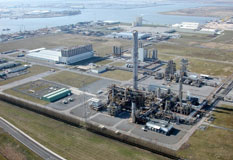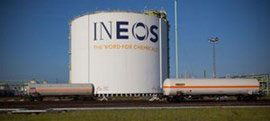PRA Chinese
Rubber Journal Asia Injection Moulding Asia Energy, Oil & Gas Asia
VISIT OUR OTHER SITES:
PRA Chinese
Rubber Journal Asia
Injection Moulding Asia
Energy, Oil & Gas Asia
Plant expansions: Borealis moves forward with PDH; Ineos debottlenecks ENB plant

Chemicals maker Borealis says it will move to the FEED-phase for a new, world-scale propane dehydrogenation (PDH) plant, after successfully concluding a pre-FEED feasibility study in June 2017. The facility is planned to be located at the existing Borealis production site in Kallo, Belgium.
After completion of the FEED, the final investment decision will be taken in the third quarter of 2018. The start-up of the plant is scheduled for the beginning of 2022. The planned PDH plant has a targeted production capacity of 740 kilotonnes/year, making it one of the largest and most efficient facilities in the world, says Borealis. The Borealis Kallo location has been chosen due to its logistical position and its experience in propylene production and handling. Borealis has selected Honeywell UOP’s Oleflex technology for the new plant, said to be a reliable and sustainable choice for on-purpose propylene production.
“The decision to move to the FEED phase is the last step before the final investment decision. It illustrates our commitment to the project as well as our conviction that the investment is needed in Europe, allowing us to further strengthen our position as the leading innovative polypropylene and propylene supplier that we are today,” says Markku Korvenranta, Borealis Executive Vice President, Base Chemicals.
Oiltanking Antwerp Gas Terminal has been agreed upon as the long-term logistics partner for the handling of propylene and propane as well as for the construction of a new 135,000-sq m propane storage tank. The produced hydrogen will be sold to Air Liquide under a long-term agreement. Both agreements are subject to the positive final investment decision.
“The project has taken major positive steps forward during the feasibility phase,” explains Thomas Van De Velde, Borealis Vice President Hydrocarbons & Energy. “Most of the critical uncertainties have been cleared, paving the way for a successful FEED and ultimately for the final investment decision next year.”
Borealis says it continues to cooperate closely with various authorities and stakeholders in Flanders and Belgium, including the Port of Antwerp, to secure the necessary support package

Meanwhile in other news, Ineos says it will expand its Ethylidene Norbornene (ENB) plant in Antwerp, increasing capacity by 7,500 tonnes to 35,500 tonnes, with the capacity being available by the end of 2018.
“We are delighted to be able to announce that we will make another debottleneck of our ENB plant to support the growth,” said David Brooks, Business Director, Ineos Oxide. “We already, have what we believe to be, the lowest cost production unit in the world and this expansion will yet further improve our cost base, for this important specialty chemical, whilst providing new ENB tonnes to the market when it needs them”
Brooks adds, “As part of this next expansion phase Oxide will establish strategic stocking locations in N.E Asia and the US to meet customer needs. Also, in order to reinforce our position as the low cost ENB producer a strategic review is underway of options for the long term sourcing of Dicyclopentadiene (DCPD), a key feedstock in the production of ENB.”
ENB is used primarily in the production of ethylene-propylene-diene rubber (EPDM). Because it is wear and weather resistant this high performance rubber is increasingly favoured for use in the automotive, white good and construction industries. Its unique molecular structure means ENB is also used in the high value fragrance industry as a scent carrier.
(PRA)Copyright (c) 2017 www.plasticsandrubberasia.com. All rights reserved.























































